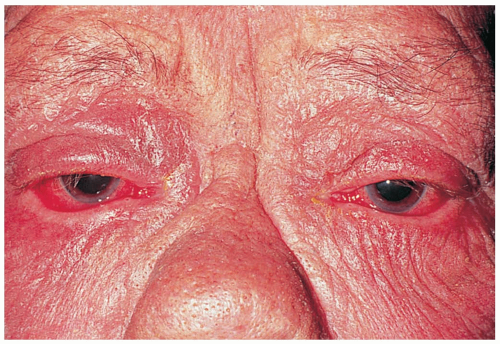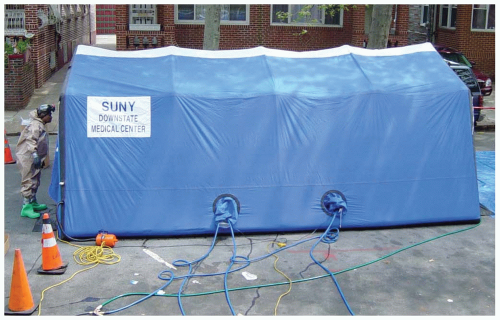Bone marrow (hematopoietic) |
0.7-10 Gy (70-1,000 rads)
Mild symptoms may occur as low as 0.3 Gy (30 rads) |
Anorexia, nausea and vomiting
Occurs 1 hour to 2 days after exposure
Lasts for minutes to days |
Stem cells in bone marrow are dying, although patient may appear and feel well
Lasts 1 to 6 wk |
Drop in all blood cell counts for several weeks
Anorexia, fever, malaise
Primary cause of death is infection and hemorrhage
Survival decreases with increasing dose
Most deaths occur within a few months after exposure |
In most cases, bone marrow cells begin to repopulate the marrow
There should be full recovery for a large percentage of individuals from a few weeks up to 2 yr after exposure
Death may occur in some individuals at 1.2 Gy (120 rads)
The LD50/60 is about 2.5 to 5 Gy (250 to 500 rads) |
Gastrointestinal (GI) |
10-100 Gy (1,000-10,000 rads)
Some symptoms may occur as low as 6 Gy (600 rads) |
Anorexia, severe nausea, vomiting, cramps and diarrhea
Occurs within a few hours after exposure
Lasts about 2 days |
Stem cells in bone marrow and cells lining GI tract are dying, although patient may appear and feel well
Lasts less than 1 wk |
Malaise, anorexia, severe diarrhea, fever, dehydration, electrolyte imbalance
Death is caused by infection, dehydration, and electrolyte imbalance
Death occurs within 2 wk after exposure |
The LD100 is about 10 Gy (1,000 rads) |
Cardiovascular (CV) and central nervous system (CNS) |
>50 Gy (5,000 rads)
Some symptoms may occur as low as 20 Gy (2,000 rads) |
Extreme nervousness; confusion; severe nausea, vomiting, and watery diarrhea; loss of consciousness; burning sensations of the skin
Occurs within minutes after exposure
Lasts for minutes to hours |
Patient may return to partial functionality
May last for hours but often is less |
Return of watery diarrhea, convulsions, coma
Begins 5 to 6 hr after exposure
Death within 3 days after exposure |
No recovery |













